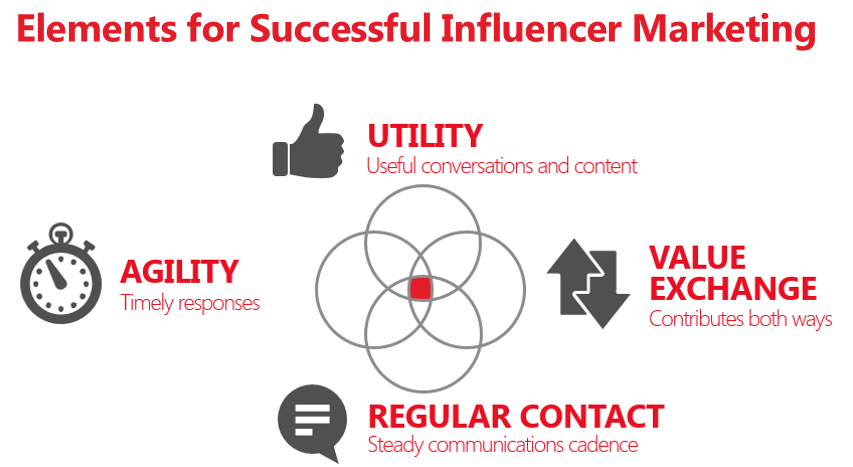Six Tips For Influencer Marketing Success
Brands have embraced influencer marketing and are now collectively spending billions of dollars a year on influencer marketing campaigns.
But despite the spend, many brands aren’t realizing influencer marketing’s full potential.
Here are six things brands should do to ensure that their influencer marketing campaigns are successful.
1. Do due diligence
Big Brands are cracking down on influencer fraud and for good reason: as brands have flocked to work with influencers, the fees charged by popular influencers have skyrocketed.
These fees are typically correlated with how many followers influencers have, but in many cases, brands are paying for access to audiences that are inflated by fake followers. In some cases, the amount of fake followers are significant. While not all of the fake followers influencers have were acquired by influencers themselves with the intent to defraud – social platforms have been plagued by bots for years – at the end of the day, brands lose regardless.
Because this problem is so widespread, brands that embrace influencer marketing will also need to embrace performing ongoing due diligence of the influencers they work with if they want to avoid losing out.
2. Get comfortable relinquishing (some) control
Influencer marketing isn’t like traditional marketing in which brands (or their agencies) exert total control over creative, where it goes and how consumers will engage with it.
Authenticity is critical in influencer marketing and brands should recognize that the influencers they work with will generally have a better understanding than they do about what will resonate with their followers. Of course, brands need to maintain oversight of influencer campaigns to ensure they’re following all applicable regulations, but they should invite influencers to exercise creativity and avoid trying to micromanage them.
3. Don’t expect overnight results
Influencer marketing isn’t digital marketing’s get rich quick scheme. While popular influencers can shine a very bright spotlight on brands they work with very quickly, converting influencer-acquired eyeballs into lasting brand awareness and sales will realistically take time.
Brands should recognize this when they start developing an influencer marketing strategy, as this fact has a number of implications, especially around budgeting.
4. Build long-term relationships
Understanding that influencer marketing won’t deliver lasting success overnight, brands should build their influencer marketing activities around the idea that their relationships with influencers are more likely to bear fruit if they’re long-term relationships.
By aligning themselves with select influencers for the long haul, brands are far more likely to tap into those influencers’ influence. With that said, because of the costs of working with the most popular of influencers, when it comes to establishing long-term relationships, brands are wise to look at influencers with smaller followings, including microinfluencers who are in earlier stages of growing their followings.
5. Establish goals and execute accordingly
Different brands want different things out of influencer marketing and it is important for brands to formally define goals when developing an influencer marketing strategy. After all, these will determine how influencer marketing campaigns should be executed.
For example, a brand that is primarily focused on driving sales will want to ensure that its campaigns are oriented to this goal. That could involve having influencers highlight key products and promote time-limited coupon codes that encourage followers to make a purchase. And the brand will want to make sure it has attribution methodology in place to ensure sales are credited to its campaigns.
6. Think beyond sponsored posts
Many brands rely heavily on sponsored posts in their influencer marketing campaigns and while these aren’t going away, the greatest opportunities for brands lie beyond sponsored posts.
Increasingly, brands in many markets such as fashion and beauty are finding ways to create true partnerships with influencers that involve collaboration and co-creation. Because these partnerships dramatically increase the influencers’ investment in a brand relationship, financially and otherwise, they have the potential to deliver much more significant results.
Article written by: Patricio Robles
0

